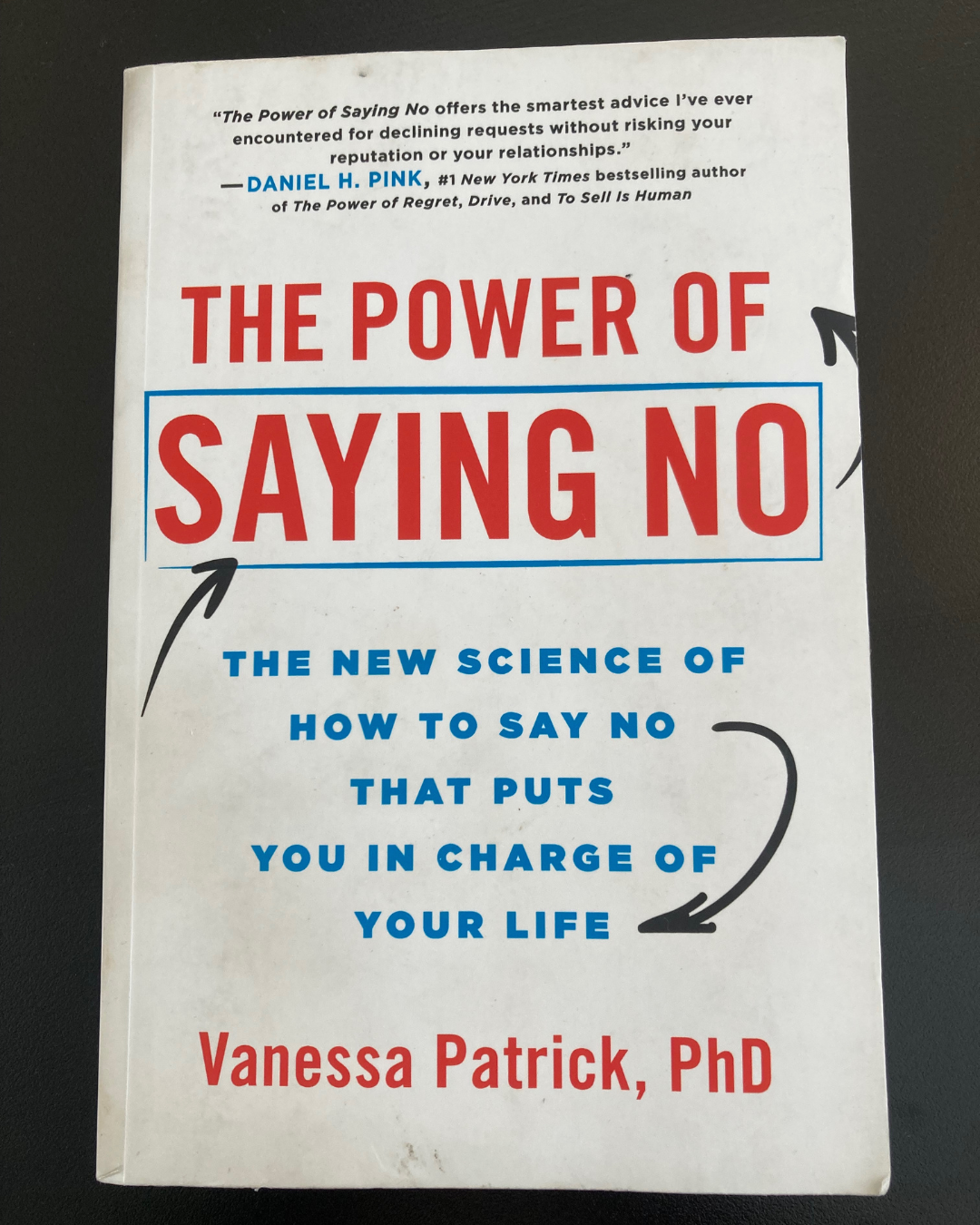NOvember: Your permission to Say No
Every NOvember, I like to revisit one of the most powerful skills any leader, business owner, or human can develop: the art of saying no.
Not the flippant, defensive no that comes from frustration or burnout.
But the calm, confident empowered no that Vanessa Patrick describes in her book The Power of Saying No as “a way of saying no that reflects your identity, conveys conviction, and doesn’t invite pushback.”
Why We Say Yes When We Mean No
We’ve been trained since childhood to be agreeable, to be “helpful,” “team players,” and “easy to work with.”
But as Patrick explains, saying yes too often is rarely about generosity; it’s about social conditioning. We fear being seen as unkind, ungrateful, or uncooperative. So we say yes to protect harmony and reputation, even when it costs us time, focus, and emotional energy.
The result? Overcommitment, resentment, and the quiet erosion of our own priorities.
Enter the Empowered Refusal
Patrick’s framework for an empowered refusal shifts the focus from guilt or explanation to clarity and conviction.
She defines it as saying no in a way that starts with you and is rooted in your values, principles, and personal policies.
Her A.R.T. framework captures it beautifully:
A – Awareness: Know what matters to you, your values, energy, and priorities.
R – Rules, not decisions: Create personal policies that take the debate out of each request (“I don’t do Friday meetings” instead of “I can’t today”).
T – Totality of self: Align your words, tone, and body language so your no feels confident, not conflicted.
It’s not about being rigid; it’s about being real.
Boundaries Are Bridges, Not Walls
“No” is a complete sentence, and yet it’s one of the hardest sentences to say.
For many of us, it catches in the throat. “No, I don’t want to” feels too blunt. “No, not right now” feels like we’re letting someone down. I often wish I could say “No, that doesn’t work for me” as easily as I say “Sure, I can fit that in.”
That’s where Kami Orange’s work on boundaries offers such a compassionate middle ground. She reminds us that boundaries aren’t barriers; they’re bridges. They’re the way we teach people how to connect with us without exceeding our capacity.
Kami encourages us to find ways to say no that maintain both self-respect and relationship, such as:
“Thanks for thinking of me, I can’t take that on right now.”
“That’s not something I can do, but I appreciate the invitation.”
“No, but here’s what could work for me.”
“That’s not a fit for me, and I trust you’ll find the right person.”
Each version protects your energy while still keeping the door to connection open.
It’s not a hard stop; it’s a gentle redirection back toward mutual respect.
Healthy boundaries say, “This is where I end and you begin.” They make space for honest connection rather than quiet resentment. They honour both your humanity and the other person’s.
👉 Check out Kami’s Instagram here
Don’t Say No to the Things You Love
NOvember isn’t about saying no to everything, and definitely not to the things you love.
I often see leaders start delegating and hand away their favourite pieces of mahi, the creative or people-focused parts that light them up. They end up holding on only to the tasks that drain them.
So as you practise empowered refusal, remember this:
Don’t say no to the work that fills your cup, fuels your purpose, or reminds you why you started in the first place.
Say no to the things that drain you, the things that make you sigh, the things you really didn’t want to do anyway.
Saying No to Guilt
For many of us, guilt is the hardest “ask” to refuse.
We can decline a meeting, reschedule a catch-up, or delegate a task, but the guilt that whispers “you should be doing more” sneaks in anyway.
This NOvember, try saying no not just to requests, but to that internal pressure to please.
You don’t owe anyone an apology for prioritising your wellbeing, your focus, or your joy.
Your Challenge for NOvember
Each morning this week, finish this sentence:
“Today I give myself permission to say no to ____ so I can say yes to ____.”
It might be no to overcommitting, so I can say yes to rest, or no to guilt, so I can say yes to peace.
You don’t have to act on it immediately, just start noticing where that permission changes your choices.
As you review your week, reflect on what you’ll STOP, START, and KEEP doing as a result.
Because every no creates space for a better yes - to yourself, your priorities, and your peace.
If you’re ready to turn your “no” into a more intentional “yes,” let’s talk about how to make space for the work and life that truly fulfil you. Please use the link below to find a time for us to talk.




